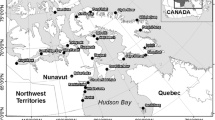Abstract
The practice of adding substances to make water safe to drink and its consequential effects on human health have been a contentious matter for a long time. In this study, the addition of fluoride in drinking water was evaluated after examining two different countries: Britain and Turkey. This study has used an independent and ethical approach taking into account the cautious but assertive dentists’ comments on the addition of fluoride for years. This research focuses on a comparative analysis of Britain, an advanced economy, and Turkey, a developing country, supported with tangential reference to worldwide practice in general. Drawing on ongoing studies, the research analyses empirical evidence and arguments to conduct an assessment of Turkey’s practices. The ethical argument about fluoridation focuses on the question of adequate evidence for its health benefits and the autonomy of the consumer. As the consumer is not fully consulted about this practice, it could be argued that the will of the consumer can be put to the test in the democratic process. Hence, the key to any policy has to be about both clarity of the national government intention and continued engagement with consumer groups at regional level.
Similar content being viewed by others
References
Antwi, E., Bensah, E. C., & Ahiekpor, J. C. (2011). Use of solar water distiller for treatment of fluoride-contaminated water: The case of Bongo district of Ghana. Desalination, 278(278), 333–336.
Awofeso, N. (2012). Ethics of artificial water fluoridation in Australia. Public Health Ethics, 2(5), 161–172.
Bennett, O., & UK Government. (2013). Fluoridation. England: Standard Note: SN/SC/5689.
Bigay, J. (1985). Fluoroaluminates activate transducin-GDP by mimicking the γ-phosphate of GTP in its binding site. Feb Letters, 191(2), 181–185.
Cansheng, Z., Guanglu, B., Xiaoli, L., & Yue, L. (2006). Screening high-fluoride and high-arsenic drinking waters and surveying endemic fluorosis and arsenism in Shaanxi province in western China. Water Research, 40, 3011–3015.
Coggon, D., & Cooper, C. (1999). Fluoridation of water supplies: Debate on the ethics must be informed by sound science. BMJ (British Medical Journal), 319(7205), 269–270.
Cohen, H., & Locker, D. (2001). The science and ethics of water fluoridation. Journal-Canadian Dental Association, 67(10), 578–579.
Connett, P. (2002). The absurdities of water fluoridation. http://fluoridealert.org/articles/absurdity/.
Connett, P. (2012). 50 Reasons to oppose fluoridation. http://fluoridealert.org/articles/50-reasons/.
Demer, S.A. (2011). Investigation of different fluoride contents of drinking waters in Isparta City Center. Ekoloji, 20(79), 77–82.
E:\fluoride in drinking water\Fluoridation\Fluoride Action Network Water Fluoridation.mht. (n.d.).
Fitzmaurice, P. (2005). Response to a list of “50 reasons to oppose fluoridation” compiled by Dr Connett*. Chicago: TW Cutress.
Fluoridation, W. (n.d.). E:\fluoride in drinking water\Fluoridation\Fluoride Action Network Water Fluoridation.mht.
Gibson-Moore, H. (2009). Water fluoridation for some should it be for all? Nutrition Bulletin, 34, 291–295.
Hapçıoğlu, B., Dişçi, R., Demir, L., Başak, E., Güray, Ö., & Özer, N. (1992). Türkiye içme sularinda Florürün bölgesel dağilimi (i).
Harding, M. A., & O’Mullane, D. M. (2013). Water fluoridation and oral health. Acta Medica Academica, 2(42), 131–139.
Harris, R. R. (1989). Dental science in a new age: A history of the National Institute of Dental Research. Rockville, MD: Montrose Press.
Hirzy, D. J. (2000). Why EPA’s Headquarters Professionals’ Union Opposes Fluoridation. http://fluoridealert.org/articles/epa-union/.
Illich, I. (1974). Medical nemesis: The destructive force of professional health care. Social Policy, 5(2), 3–9.
Keçeci, A. D. (2012). Prevelance, perception and treatment alternatives of dental fluorosis in a Turkish rural community.
Lawrance, S., Bajpai, J., & Bajpai, A. K. (2011). Designing fixed bed column and batch studies of Chitosan nanoparticles for defluoridation of drinking water. Journal of Dispersion Science and Technology, 32, 1256–1265.
Liyan, S., Yanhui, G., Hui, L., Wei, Z., Yunpeng, D., Bingyun, L., et al. (2013). An assessment of the relationship between excess fluoride intake from drinking water and essential hypertension in adults residing in fluoride endemic areas. Science of the Total Environment, 443, 864–869.
Maheshwari, R. C. (2006). Fluoride in drinking water and its removal. Journal of Hazardous Materials, B, 137, 456–463.
Marier, J. (1977). Some current aspects of environmental fluoride. Science of the Total Environment, 8(3), 253–265.
Mullenix, P. J., Denbesten, P. K., Schunior, A., & Kernan, W. J. (1995). Neurotoxicity of sodium fluoride in rats. Neurotoxicology and Teratology, 17(2), 169–177.
Oruc, N. (2008). Occurrence and problems of high fluoride waters in Turkey: an overview. Environmental Geochemistry and Health, 30(4), 315–323.
Rice, J. R., Boyd, W. A., Chandra, D., Smith, M. V., & Den Besten, P. K. (2014). Comparison of the toxicity of fluoridation compounds in the nematode caenorhabditis elegans. Environmental Toxicology and Chemistry, 1(33), 82–88.
Scott, A. M. (2008). Report of the water fluoridation panel. Hampshire: Hampshire County Council.
Singh, B., Gaur, S., & Garg, V. (2007). Fluoride in drinking water and human urine in Southern Haryana, India. Journal of Hazardous Materials, 144, 147–151.
The World Health Organization. (2004). Fluoride in drinking-water, background document for development of WHO guidelines for drinking-water quality. England: WHO.
Viswanathan, G., Jaswanth, A., Gopalakrishnan, S., Siva Ilango, S., & Aditya, G. (2009). Determining the optimal fluoride concentration in drinking water for fluoride endemic regions in South India. Science of the Total Environment, 407, 5298–5307.
Author information
Authors and Affiliations
Corresponding author
Rights and permissions
About this article
Cite this article
Ateş, A., Özer, Ç. Ethical Approach to Fluoridation in Drinking Water Systems of UK and Turkey. J Agric Environ Ethics 30, 171–178 (2017). https://doi.org/10.1007/s10806-017-9658-7
Accepted:
Published:
Issue Date:
DOI: https://doi.org/10.1007/s10806-017-9658-7




